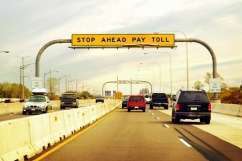
All are toll road projects that are currently undergoing or have been through a restructuring – or even bankruptcy. While traditional restructuring tools are certainly available in restructuring toll road deals, toll road restructurings also present unique considerations that warrant special attention.
Toll road revenues have been adversely affected by the economic recession and rising gas prices, which drove down traffic overall. The availability of alternative, free public roads has also dissuaded drivers from using toll roads. In some instances, toll roads have not achieved revenue projections because they were built in anticipation of new housing and commercial developments that never materialized.
Traditional Restructuring Tools
The traditional tools employed with respect to the restructuring of any project finance deal — such as an amendment to the financing documents and/or a conversion of debt to equity — may also be used for toll road matters. In a restructuring of the finance documents, the key constituencies may agree upon extended maturity dates, revised interest rates and amended financial covenants, for example. In the San Joaquin Hills toll road deal, $2.06 billion in toll revenue bonds were restructured by extending maturity dates, revising the debt-service coverage ratio and reducing annual debt service. Debt restructurings were also implemented for the Dulles Greenway (VA) and Southern Connector (SC) projects.
As an alternative to or in conjunction with a debt restructuring, lenders may seek to convert their debt, in whole or in part, to an equity stake in the project. The lenders to the South Bay Expressway project in southern California converted part of their debt into equity following the project’s chapter 11 bankruptcy filing in 2010. Among the factors that lenders will consider in evaluating whether to convert their debt to equity are: (i) whether they want to be in an ownership position; (ii) whether existing equity holders will agree to part with ownership or control and (iii) whether change of control provisions impact the ability to convert.
If the parties seeking to restructure cannot obtain the requisite consents under the governing agreements, they should explore whether the consent requirements under the Bankruptcy Code would permit the proposed restructuring to be achieved. Confirmation of a reorganization plan under the Bankruptcy Code requires the consent of one-half in number of creditors and two-thirds in dollar amount of each creditor class voting on the plan. This threshold may be more lenient than the voting thresholds under the applicable credit agreements or bond documentation.
Unique Challenges in Restructuring Toll Road Projects
To have meaningful restructuring negotiations, the parties must develop a collective view about the stabilized cash flow for the project. Many toll road projects never achieved initial revenue projections; yet, there are various impediments to increasing toll road revenues. The ability to raise tolls may be limited by applicable concession agreements (discussed below) or by the need to obtain government or regulatory approval. Of course, toll road operators must consider elasticity of demand and recognize that raising tolls may cause drivers to use alternate routes.
A concession agreement is a grant by the local authority to the toll road operator to operate the road on certain terms. The terms of any applicable concession agreement may limit the operator’s ability to increase the toll rate, constrain the ability to extend the final maturity date, and render a debt-to-equity conversion unfeasible. If a concession agreement confers the right to operate a toll road for period of years, the maturity date of the project’s financing obviously cannot be extended beyond the expiry date of the concession agreement. The local authority may or may not agree to extend the concession; for example, the concession period for the Dulles Greenway was extended from 2036 to 2056 as part of a debt restructuring. Change of control provisions may likewise impair the ability of debt holders to control the equity in the public-private partnership. The concession agreement may present other impediments to a restructuring and, therefore, will need to be reviewed and analyzed carefully.
Bonds issued in connection with toll road projects are frequently insured, or “wrapped,” by monoline bond insurers. The wrap is only as good as financial strength of the wrap provider. Also, the wrap agreement may exclude individual creditors from participating in the restructuring process or otherwise taking action unless the wrap provider is in default. Thus, it is essential that investors also scrutinize the wrap agreement in order to forge a means for participating in the process.












